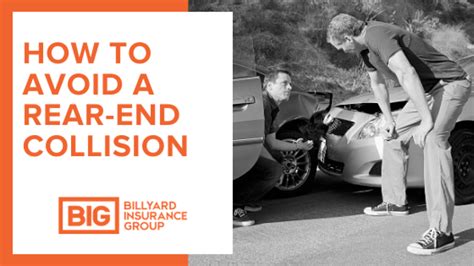Stay Safe: Effective Strategies to Avoid Rear-End Impacts
Rear-end collisions are a common type of car accident, often resulting in whiplash, injuries, and significant vehicle damage. While you can't completely eliminate the risk, implementing effective strategies can drastically reduce your chances of becoming a victim. This comprehensive guide outlines proven techniques to stay safe on the road and avoid rear-end impacts.
Understanding the Causes of Rear-End Collisions
Before diving into preventative measures, it's crucial to understand why these accidents happen. The most common causes include:
- Tailgating: Following too closely to the vehicle in front is a major contributing factor. This leaves insufficient braking distance, especially in unpredictable traffic conditions.
- Distracted Driving: Cell phone use, eating, adjusting the radio, or engaging in other non-driving activities significantly impairs reaction time, increasing the risk of rear-ending another vehicle.
- Speeding: Excessive speed reduces reaction time and increases the severity of impact in a collision.
- Poor Weather Conditions: Rain, snow, or fog significantly reduce visibility and traction, making it harder to brake effectively.
- Sudden Braking: Unexpected stops by the vehicle ahead can easily lead to a rear-end collision if the following driver is not paying attention or maintaining a safe following distance.
- Driver Fatigue: Tired drivers have slower reaction times and impaired judgment, making them more prone to accidents.
How to Avoid Rear-End Collisions: Practical Strategies
Now let's explore effective strategies to minimize your risk:
Maintain a Safe Following Distance:
This is arguably the most crucial strategy. The "3-second rule" is a widely accepted guideline: choose a stationary object (like a signpost) and count three seconds after the car in front passes it. If you pass the same point before you finish counting, you're following too closely. Increase your following distance in adverse weather conditions or when driving at higher speeds.
Minimize Distractions:
Put your phone away, avoid eating or drinking while driving, and resist the urge to fiddle with the radio or GPS navigation system. Focus solely on the road ahead. Consider using hands-free devices for calls and navigation.
Be Aware of Your Surroundings:
Constantly scan the road ahead, checking your mirrors regularly. Anticipate potential hazards, such as sudden braking by the vehicle in front, slow-moving traffic, or pedestrians. Pay attention to brake lights ahead—they're a clear indicator that the car in front is slowing down.
Drive Defensively:
Assume other drivers might make mistakes. Be prepared to react quickly and safely to unexpected situations. Leave ample space around your vehicle, providing a buffer zone for unexpected maneuvers.
Adjust Your Speed to Conditions:
Reduce your speed in adverse weather, heavy traffic, or when visibility is poor. This gives you more time to react and brake safely.
Regular Vehicle Maintenance:
Ensure your brakes are in excellent working order. Regular maintenance checks will prevent unexpected brake failures that could contribute to an accident.
What to Do if a Rear-End Collision is Imminent
Even with the best preventative measures, accidents can still happen. If you sense an impending rear-end collision, try these steps:
- Brake firmly but smoothly: Avoid sudden, jerky braking, which could worsen the impact.
- Steer to avoid a collision if possible: If safe to do so, try to steer your vehicle away from the path of the oncoming vehicle.
- Brace yourself: Protect your head and neck by bracing yourself against the headrest.
Frequently Asked Questions (FAQs)
What should I do after a rear-end collision?
After any collision, prioritize safety. Check for injuries, call emergency services if needed, and exchange information with the other driver (insurance details, contact information, etc.). Document the accident with photos and witness statements.
How can I prove I wasn't at fault in a rear-end collision?
Maintaining a safe following distance and having evidence of your driving practices (dashcam footage, witness statements) can strengthen your case.
What is the best way to avoid rear-end collisions in heavy traffic?
Increase your following distance significantly, drive more slowly and cautiously, and remain hyper-vigilant, anticipating sudden stops or lane changes.
Are rear-end collisions always the fault of the following driver?
While this is often the case, there can be exceptions, such as sudden braking without warning from the lead driver. Each accident must be assessed individually.
How can I reduce my risk of being involved in a rear-end accident at night?
Increase your following distance, use your headlights properly (low beams in most situations), and ensure your vehicle's lights are clean and working correctly.
By following these strategies and staying aware of your surroundings, you can significantly reduce your risk of being involved in a rear-end collision and keep yourself and others safe on the road. Remember, defensive driving is proactive and can save lives.

